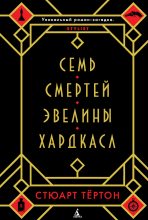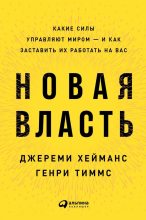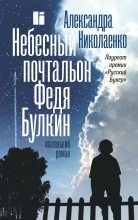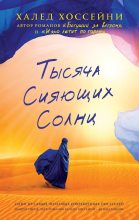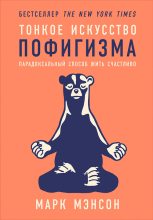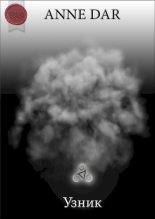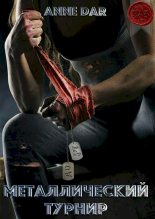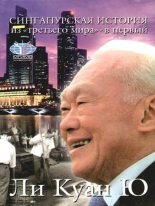- 1
- 2
- 3
- . . .
- последняя (167) »
] Loerich
The Art,m Who Would Be King
JOHN McCANNON
Nicholas Roerich
RUSSIAN AND EAST EUROPEAN STUDIES JONATHAN HARRIS, EDITOR
Nicholas Roerich
The Artist Who Would Be King
JOHN McCANNON
University of Pittsburgh Press
PUBLISHED BY THE UNIVERSITY OF PITTSBURGH PRESS, PITTSBURGH, PA., 15260 Copyright © 2022, University of Pittsburgh Press All rights reserved
Manufactured in the United States of America Printed on acid-free paper 10 9 8 7 6 5 4 3 2 1
Cataloging-in-Publication data is available from the Library of Congress
ISBN 13: 978-0-8229-4741-7 ISBN 10: 0-8229-4741-2
Cover art: S. N. Roerich, Portrait of N. K. Roerich with Mountains (1934). Oil on canvas, 133 x 118 cm. National Gallery of Foreign Art, Sofia, Bulgaria.
Cover design: Alex Wolfe
With love to Pam and Miranda
Contents
Acknowledgments ix Note on Languages, Names, and Dates xi Abbreviations and Foreign Terms xiii Code Words and Spiritual Names Used by Roerich's "Inner Circle" xv
Introduction: The Artist Who Would Be King? 3 1. Childhood and Youth, 1874-1893 14 2. Academy Days, 1893-1897 23 3. Journeyman Years, 1897-1902 38 4. The Architecture of Heaven, 1903-1906 61 5. The Nightingale of Olden Times, 1907-1909 93 First gallery of images follows page 112 6. The Great Sacrifice, 1910-1913 121 7. The Doomed City, 1913-1918 165 8. The Exile, 1918-1920 195 9. The Watchtowers of America, 1920-1923 218 10. The Messenger, 1923-1925 249 Second gallery of images follows page 280 11. Searching for Shambhala, 1925-1928 289
12. The Silver Valley, 1928-1930 337 13. The Banner of Peace, 1931-1934 362 14. The Black Years, 1934-1936 395 15. Readjustment and Resignation, 1936-1939 442 16. Into the Twilight, 1939-1947 460 Third gallery of images follows page 488 Epilogue: Contested Legacies 497
Notes 515 Selected Bibliography 589 Index 599
Acknowledgments
I
t took a long time to write this book,
and I accumulated many debts along
the way. (So many, in fact, that I apologize in advance for the inevitable but, I hope, not too numerous omissions.) My graduate-school days are far behind me, but I nonetheless owe thanks to my advisers at the University of Chicago, Richard Hellie and Sheila Fitzpatrick, who supported early stages of this research despite its sharp departure from my dissertation work. Mark Bassin has acted as a mentor and friend throughout my career. As always, I am perpetually grateful to my Chicago classmates for years of camaraderie and encouragement.
When I began this project, I fretted about trespassing on the domain of art historians, only to find myself welcomed to the field by a hospitable group that includes Karen Kettering, Rosalind Blakesley, Susan Reid, Jane Sharp, and Andrea Rusnock. The Society of Historians of Eastern European, Eurasian and Russian Art community, both online and in person, continues this standard of good will. Beyond that, many scholars from various disciplines have answered queries, read draft versions of my work, or included me in conference panels and essay collections. Though this list could be much longer, I wish to thank Jim Andrews, Christopher Ely, Willard Sunderland, Maria
Carlson, Bernice Glatzer Rosenthal, Birgit Menzel, Manju Kak, Ludmilla Voitkovska, and Lisa Smith. Special notice goes to a cohort of Roerich specialists who proved particularly generous about collaborating and exchanging ideas and insights: I owe a great deal to Alexandre Andreyev, Dany Savelli, Andrei Znamenski, and Ian Heron, and I likewise appreciate the advice and materials I received from Vladimir Rosov, Darya Kucherova, Markus Osterrieder, Anita Sta- sulane, and Shareen Blair Brysac.
Over the course of writing this book, I benefited from the help of staff and specialists at almost four dozen archives, libraries, and museums. I especially thank Fernanda Perrone, Tanya Chebotareva, and Stanley Rabinowitz at the Rutgers Special Collections, the Bakhmeteff Archive at Columbia University, and the Amherst Center for Russian Culture, respectively, and also Linda Briscoe Myers of the Harry Ransom Center at the University of Texas. I am grateful to Oriole Farb Feshbach, not only for granting access to privately held papers, but also for graciously answering endless questions about her family's involvement with the Roerich saga. Most of all, I had the pleasure during the late 1990s of visiting the Nicholas Roerich Museum regularly, making use of its archives and interviewing its staff. I cannot speak highly enough of the kindheartedness of Daniel Entin, the museum's director at the time, and its archivist, Aida Tulskaya, a lively interlocutor whose conversations I still remember fondly. I owe added thanks to the museum's current director, Gvido Trepsa, for continuing this collaborative relationship.
Funding for this project came from various sources, including the National Endowment for the Humanities (United States), the Social Sciences and Humanities Research Council (Canada), the American Historical Association, and the Kennan Institute for Advanced Russian Studies at the Woodrow Wilson International Center for Scholars. I also acknowledge the research stipends I received from the University of Saskatchewan and Southern New Hampshire University while completing this work.
This book would not exist without the efforts of those who brought it into being at the University of Pittsburgh Press. Many thanks go to Peter Kracht, Jonathan Harris, and Amy Sherman as editors; Alex
Wolfe for his technical expertise; Therese Malhame for meticulous copyediting; and the press's anonymous reviewers for helpful feedback. I was aided in my research by a University of Saskatchewan doctoral student, Rob Morley. To test this manuscript's readability, some of my oldest friends, including Trek Doyle, Patrick Myers, Michael Templeton, and others in our Texas-Ohio gaming crew, volunteered their time and patience. Finally, nothing worthwhile in my life gets done without my partner in all things, Pamela Jordan, who has shared countless adventures with me and supported the writing of this book in many ways (not least with her incisive editorial skills). Our daughter Miranda has had to live with this project her entire life—much like growing up with a demanding and not always well-behaved sibling—and I am grateful to her for putting up with it (and even helping to finish it by assisting with image selection and reproduction). As meager a reward as it may be for so much encouragement and affection, I dedicate this book to Pam and Miranda.
F
or Slavists, transliterating Cyrillic letters into English is always a fraught exercise—"Chaikovskii" or "Tchaikovsky"? "El'tsin" or "Yeltsin"?— compounded by the question of whether to use Russian first names or their anglicized equivalents ("Pavel" vs. "Paul," or "Alexei" vs. "Alexis"). If anyone has hit upon a way of doing either that is both academically precise and reliably reader-friendly, I have yet to hear about it.
Therefore, while I follow scholarly convention in the notes and bibliography by citing Russian-language sources according to the Library of Congress system, I have focused in the main text chiefly on the needs of nonspecialist readers. This means privileging phonetic simplicity and familiar usages over linguistic consistency ("Gorky" rather than "Gor'kii," for example, or "Fyodorov" instead of "Fedorov"). First names are given in their Russian form—such as "Sergei" in favor of "Serge"—except where common usage in English dictates otherwise, as in Nicholas II or Leon Trotsky, rather than Nikolai II or Lev Trotskii. As for the Roerichs themselves, I have Westernized their names because it was in that fashion that they published books and earned fame in Europe and America. Hence, "Nicholas" and "Helena," not "Nikolai" and "Elena." (And, of course, "Roerich" instead of "Rerikh.") By the same token, George is not "Yuri," except when I write about him in his youth. I deviate from this rule in referring to Sviatoslav only by that name and discarding the unorthodox "Svetoslav" that was often used in the West. (I retain the nickname "Svetik," owing to his parents' fondness for it.)
Translations from Russian and other European languages are my own unless otherwise indicated. In cases where my own rendering of a Russian source closely matches or has been influenced by an earlier researcher's translation, I have chosen to acknowledge the overlap in my notes rather than resorting to suboptimal wording simply for the sake of staking out a version of my own.
Names and terms taken from Tibetan, Mongolian, and other Asian languages are transliterated with an eye toward familiarity and reader-friendliness. With respect to Chinese, I have favored the Wade-Giles system of romanization, both for period flavor and because Roerich himself used it in his English-language publications, but I have included pinyin versions for the sake of clarity.
Note on Languages, Names, and Dates
Place names in Europe and Asia have changed frequently since Roerich's birth, or are rendered differently by neighboring languages. Throughout the text, I have attempted to make it clear how, when Roerich was in what he considered to be Peking, Urga, or Bombay, he was in Beijing, Ulaan- baatar, and Mumbai—and so forth—and anyone familiar with Russian history knows how Roerich's hometown of Saint Petersburg became Petrograd during World War I, Leningrad from the 1920s through the 1980s, and Saint Petersburg again after the collapse of the USSR. Regarding dates, Russia before 1918 continued to measure time with the Julian calendar, which ran thirteen days behind the Gregorian calendar used commonly in the West. When necessary, this book distinguishes between the two systems by using the abbreviations "OS" (old style) and "NS" (new style), respectively.
Abbreviations and Foreign Terms
Amtorg American Trading Corporation (joint-stock enterprise facilitating Soviet trade in the United States)
ARCA American-Russian Cultural Association
GKK Main Concessions Committee (aka Glavkontsesskom)
GOI Government of India
Gosizdat State Publishing House of the USSR
HRI Himalayan Research Institute (aka Urusvati)
IAK Imperial Archaeological Commission
INO Foreign Department (of the OGPU)
IOPKh Imperial Society for the Encouragement of the Arts
IRAO Imperial Russian Archaeological Society
IRCA Indo-Russian Cultural Association
Kadet Member of Constitutional Democratic Party
KMT Chinese Nationalist Party (Kuomintang)
miriskusnik Member of World of Art Society
Mir iskusstva World of Art (exhibition society and art journal)
MKhT Moscow Art Theatre
MTsR International Center of the Roerichs (Moscow)
- 1
- 2
- 3
- . . .
- последняя (167) »
